One of the most fun things about this art form is experimenting with ways to color resin. These resin color suggestions first appeared on the Resin Crafts Blog.
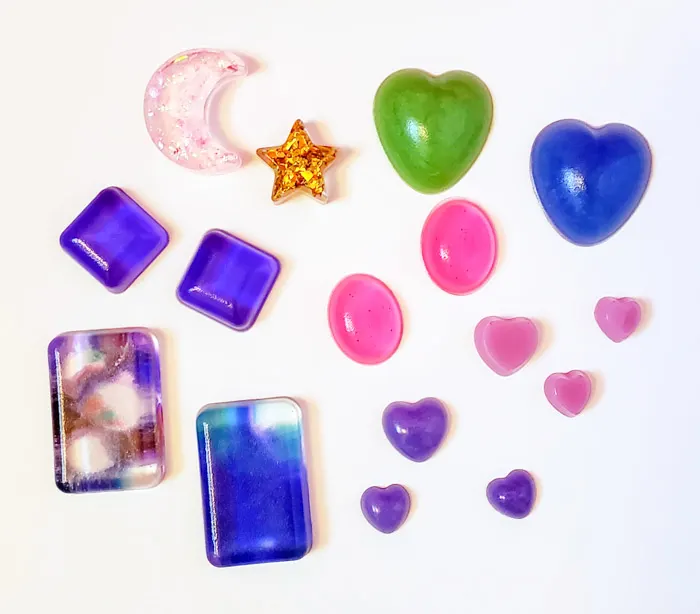
I tried six different ways to color resin and I’m excited to show you my results! I’m hoping that you’ll learn something new, and be inspired by one of these ways of how to color resin. This post originally appeared on the Resin Crafts Blog.
REASONS TO COLOR RESIN
Using resin in its clear and colorless form has some fabulous uses. You can use it to embed shells, flowers, beads, gems, candy and more in things like pendants and coasters.
But many times you’ll want to add color to your resin. Colored resin works great for jewelry, trays, game pieces, charms, and drawer knobs, to name a few.
THINGS THAT CAN BE USED TO COLOR RESIN
There are many options when it comes to dying resin. I have chosen a few pretty common ones, and some you may already have in your craft supplies.
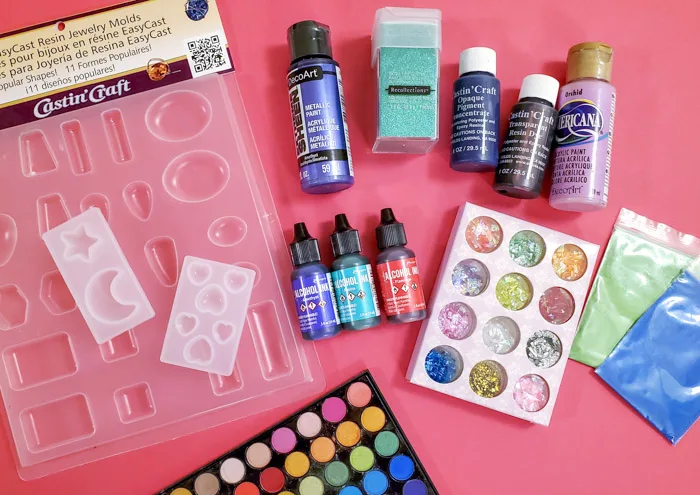
RESIN DYE
Resin dyes (buy here) can be found in transparent or opaque pigments. A transparent dye will give the resin color, but light will still pass through the casting.
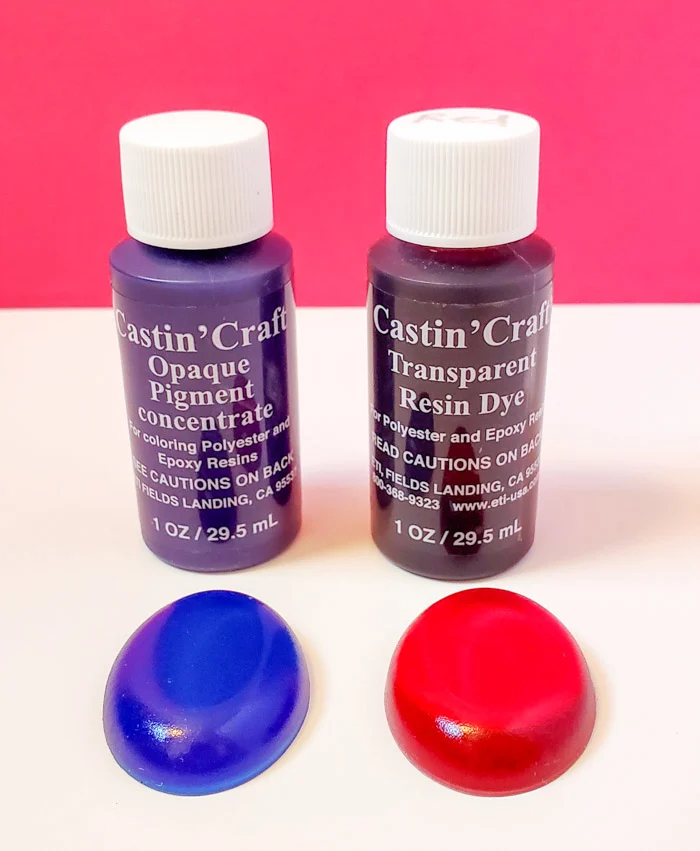
An opaque pigment will color the resin and little to no light will pass through the resin. You can experiment with mixing custom colors.
MICA POWDER
Mica powder (buy here) has a slight shimmer and is often used in eye shadows. It can be purchased online and often comes in small plastic pouches and is available in many colors. The powder mixes into the resin very thoroughly to give consistent color.

You can see how there is a bit of shimmer even when the resin has cured. After pouring the resin, I gave it a swirl with a toothpick, and it remained as it cured to be visible in the final result.
EYE SHADOW
As you might expect, eye shadow will be very similar to mica powders. I scraped a bit of eye shadow into a powder and added it to the resin.
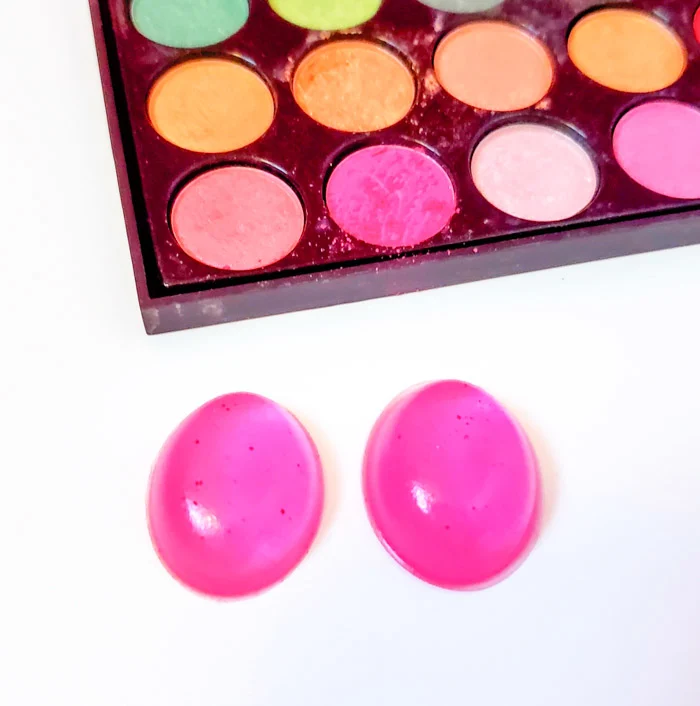
However, I found that it didn’t mix in completely. Some of the color stayed clumped together, and the flecks are noticeable in the end. Not my favorite result.
ALCOHOL INK
Alcohol inks (buy here) are highly pigmented, alcohol-based inks that are waterproof and will stick to most hard surfaces. They don’t compromise the curing of the resin, so they can be mixed in completely or dropped on the surface.
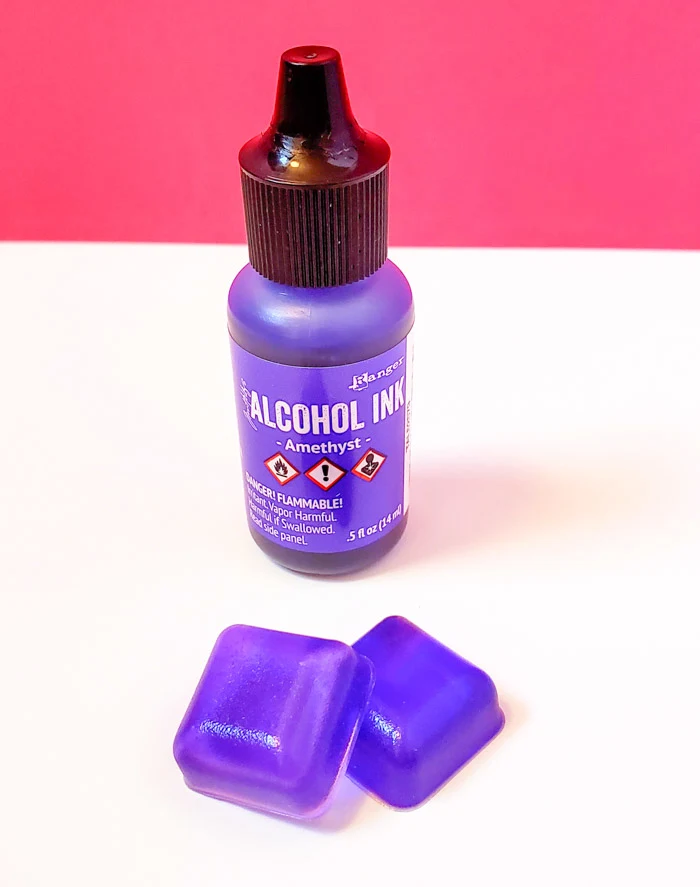
Ink drops can also be added as a top layer, after a resin piece has cured.
In this example, I added alcohol ink drops to the resin right after it was poured into the mold. This is what you see looking through the top of the pieces now that they’re out of the mold.
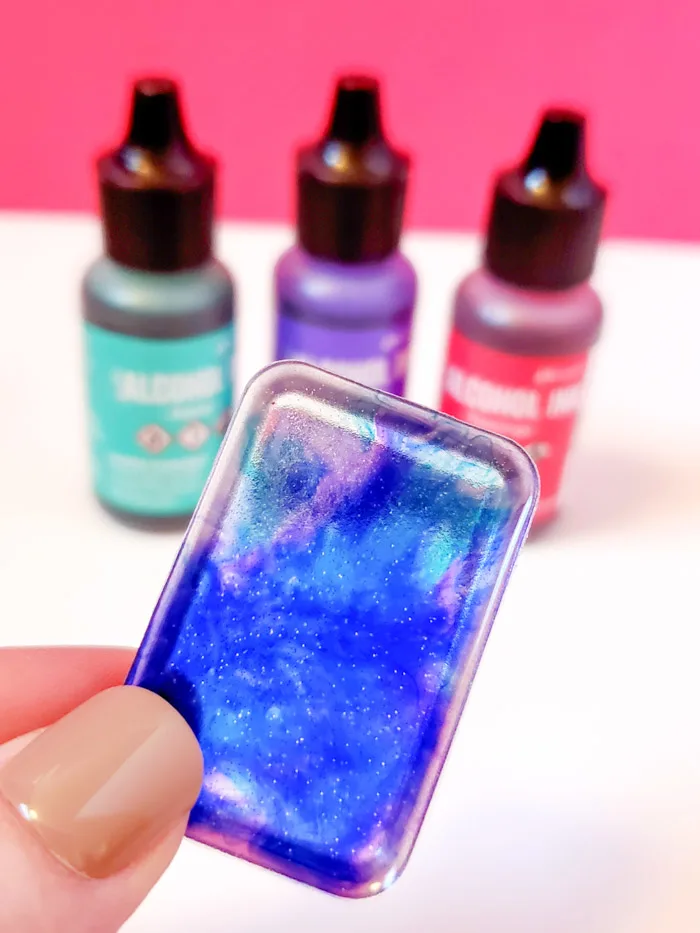
ACRYLIC PAINT
Acrylic paint can also be used to dye resin. Usually, a higher quality paint will produce better results. The casting on the left is colored with a shimmer “color shift” paint and the one on the right is regular.
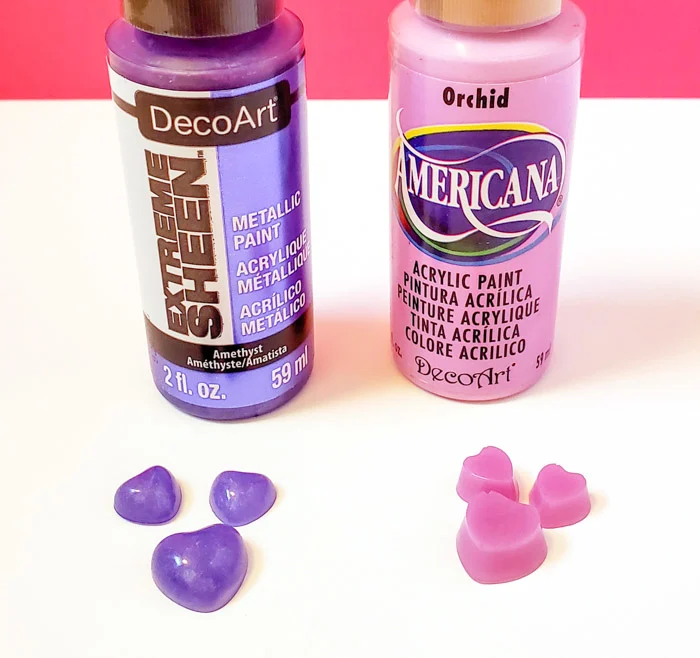
They both take the color well, and the shimmer finish on the left is quite pretty.
GLITTER
Glitter doesn’t technically change the color of the resin. But it can definitely change the look.
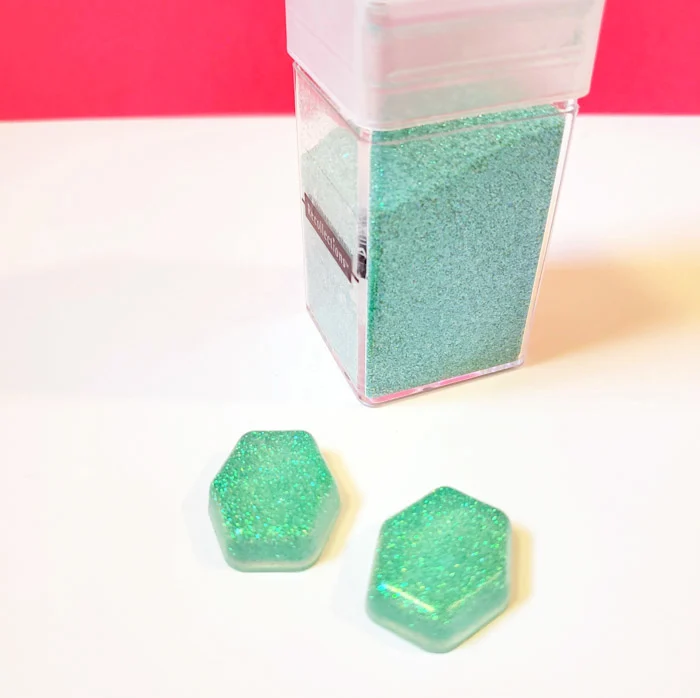
Fine glitter has a better chance of staying more suspended through the resin, while heavier glitter pieces will sink as the resin cures.

These glitter flakes (buy here) mostly sink since they are heavier than the resin. They end up on the top as you pop a shape out of a mold, but they still create a lot of reflection and color in the finished piece.
You can also mix a combination of glitter with just a bit of another colorant.
RESIN DYE RESULTS / CONCLUSION
Aren’t those all pretty? Which one is your favorite?
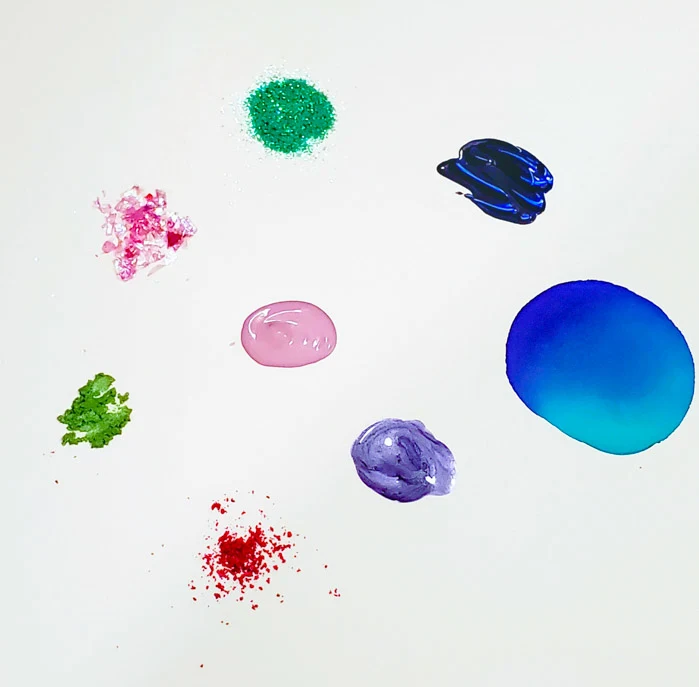
There are a couple of things to remember.
- Always try to start out with the least amount of colorant as you can. (The exception: Fine glitter! Add a good amount of it!)
One sprinkle. One drop. Add more as needed, but this way you will increase the chances of not disrupting the curing process. - Any dye that doesn’t match the brand of resin you are using may produce unexpected results. Curing can be affected, or it may turn a different color.
If you’re going to be working on a piece that you really don’t want to mess up, it’s always a good idea to run a small test pour first to see if you get the results you’re hoping for.
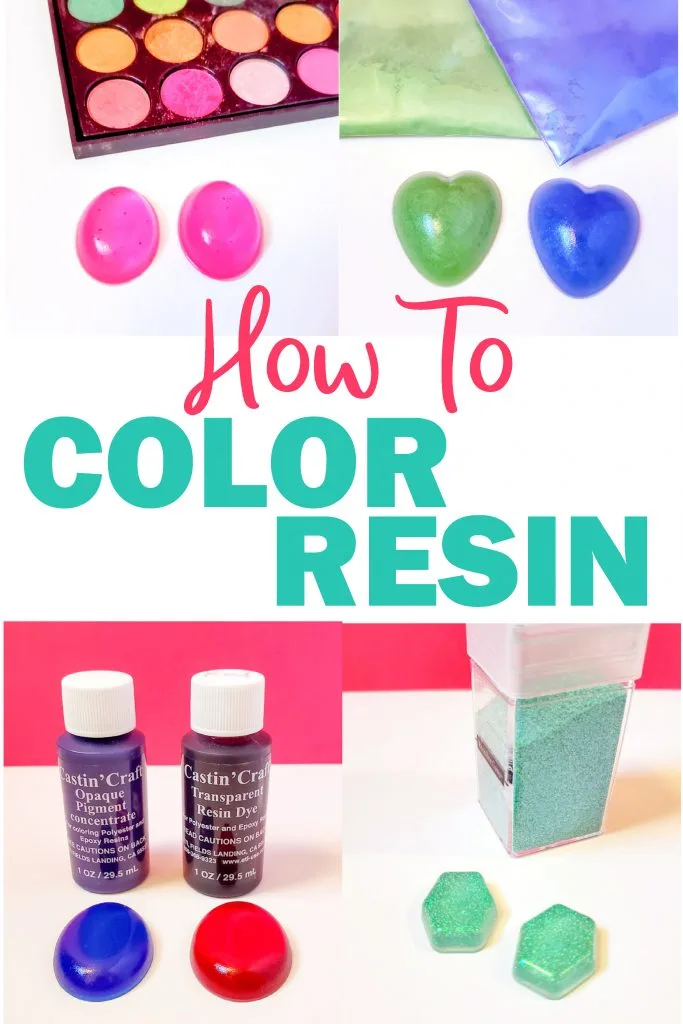
Share your favorite ways to color resin in the comments so I can try even more!
